Si observa la variedad de delicadas flores en todos los colores del arcoíris, hay una miríada de orquídeas que alegrarán su hogar y realzarán la estética de su espacio. Pero, ¿estás cuidando bien tu orquídea?
Cuando se trata de regar su orquídea, hay errores que cometen incluso los padres de plantas más ávidos. ¡Afortunadamente, hay guías prácticas como esta para dar instrucciones paso a paso para cuidar su orquídea!
Si está buscando bañar su planta tropical en una buena dosis de agua, hay un método seguro que aumenta esas flores y promueve la salud de su orquídea. Olvídese de las conjeturas y riegue sus orquídeas con la cantidad, temperatura y tiempo correctos para que se mantengan por más tiempo.
¡Esta es la forma correcta de regar las orquídeas para que florezcan saludables!
Materiales necesarios:
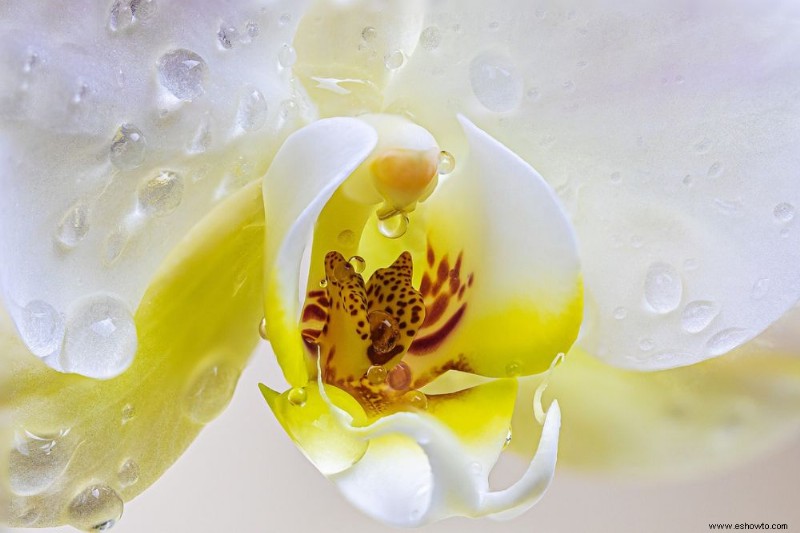
Cuando se trata de regar su orquídea de la manera correcta, ¡prepárese con anticipación teniendo estos elementos listos!
- Fregadero de cocina
- Mulch (si aún no está en su maceta)
- Maceta con buen drenaje (si su orquídea aún no está en una)
- Bandeja de guijarros (opcional)
Paso uno:determina si tu orquídea necesita riego
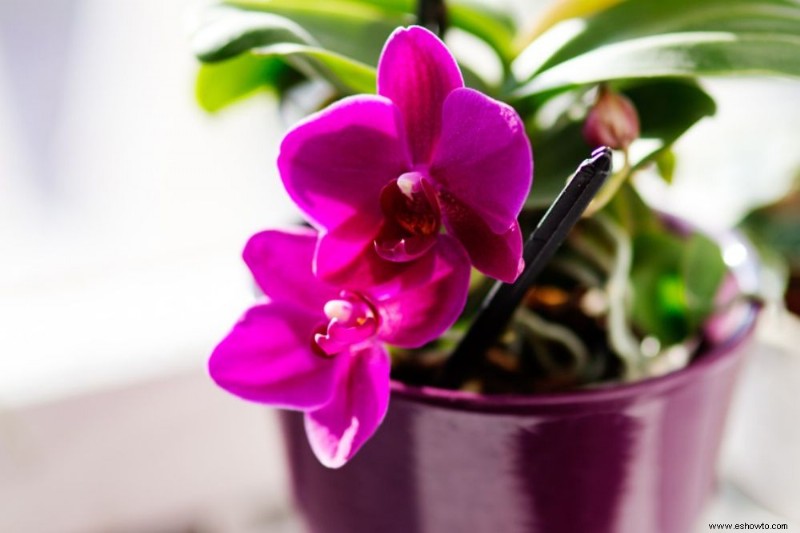
Las orquídeas a menudo vienen en macetas con corteza o turba, que ayudan a retener la humedad para la planta. Dependiendo del mantillo que tenga su orquídea, esto determina si necesita regar con más frecuencia o no.
Para las orquídeas con corteza o astillas de madera, se secan mucho más rápido que el musgo. Por lo tanto, las orquídeas con mantillo de madera requieren un riego más frecuente para garantizar que su planta reciba suficiente humedad. Si su orquídea está en turba, reduzca el riego a cada dos o tres semanas.
Saber si tu planta necesita un buen riego es por el peso de la maceta de tu orquídea. Levántalo y mira si es liviano o pesado. Si es pesado, eso significa que el mantillo y su planta todavía están llenos de agua buena. ¿Es fácil de levantar y ligero como una pluma? ¡Hora de regar!
Otra forma de saber si su orquídea necesita riego es empujando su dedo en la tierra. Haz esto para ver qué tan húmeda está la tierra. ¿Todavía húmedo? Deja que tu orquídea siga haciendo de las suyas. ¿Seco? ¡Hora de regar!
Consejo profesional: Si tiene dudas sobre si su planta necesita riego, déjelo para otro día más o menos, ya que es mejor pecar de precavido cuando se trata de orquídeas. Después de esperar, vuelva a probar la humedad del suelo y el peso de la maceta. Uno de los errores más comunes al cuidar una orquídea es regar en exceso.
Paso dos:utilice la temperatura del agua adecuada
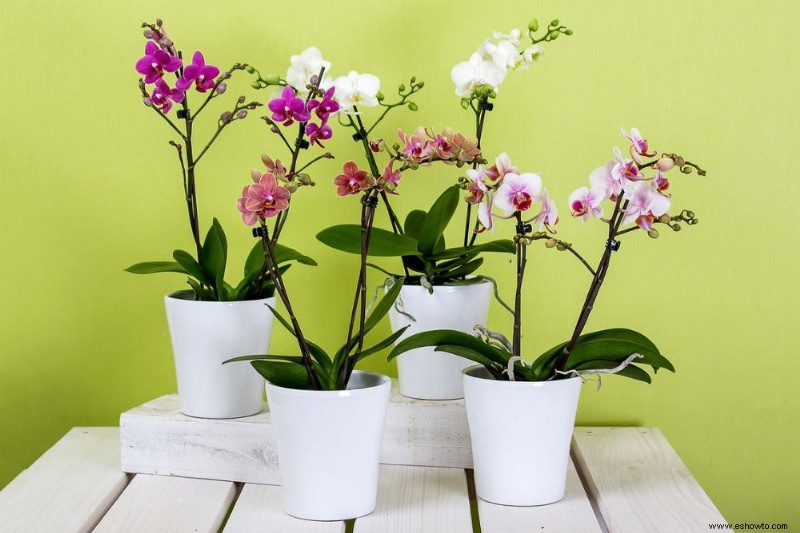
Unlike many houseplants which are tolerant to most water temperatures, orchids actually do better with warmer water. Orchids are tropical plants so using warmer water mimics the environment of where they grow best.
When watering your orchids, try to set your tap to a warmer temperature before watering. Lukewarm water is ideal, which is between roughly 98 and 105 degrees Fahrenheit. Avoid using cold water so you don’t shock your plants. Stunned orchids have a higher chance of root damage, poor growth, wilting, or dropping leaves.
Step Three – Water Your Orchids
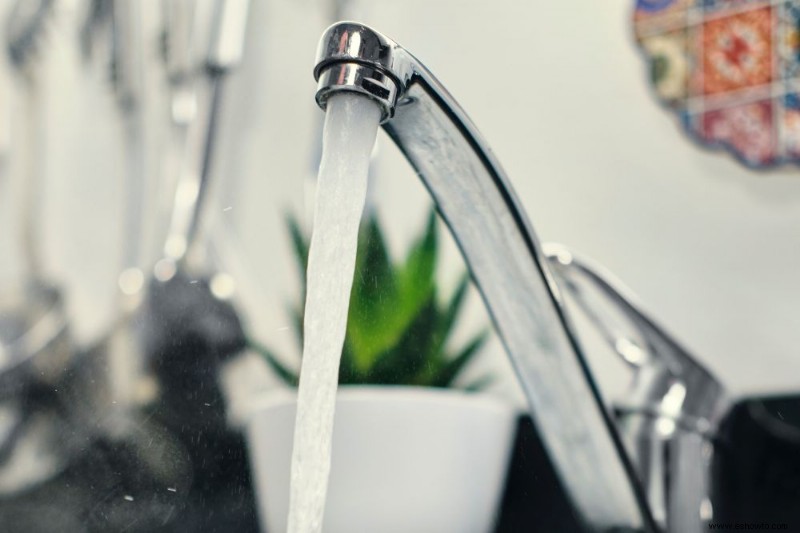
When it comes to watering your orchids, most avid orchid gardeners swear by the soaking method. This method saturates both the mulch and your plant’s soil completely, keeping your orchid happy for longer.
When watering your orchid, first let your kitchen tap run for a while until you achieve the right temperature. Not too hot or cold, but lukewarm. Once it is at the right temperature, put your orchid in the sink for a good soaking.
Let the water pour over your orchid’s base for couple of minutes, or until the mulch is fully saturated. Remember, the water should always drain out of the bottom of your pot to prevent overwatering and root rot. For extra protection you can place your orchid on a pebble tray to ensure to roots don’t sit in water.
Consejo profesional: If your pot does not allow draining, repot it right away! Not sure how to repot your orchid? Find out all you need to know about repotting here!
Step Four – Create a Watering Schedule for Your Orchid
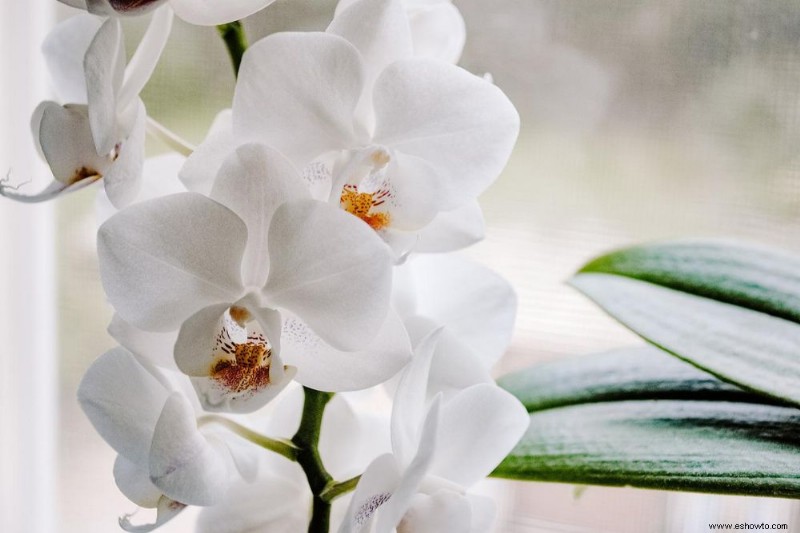
Orchids require watering about once or twice every week during the growing seasons. This varies depending on your climate and the amount of sunlight your house gets each day. The humidity will also affect how often you water your plant.
Become familiar with your orchid’s specific watering schedule by monitoring your orchid closely. For those who like to be organized, jot down notes on when you water to find your plant’s watering trends. Determining a schedule will help you slip into an easy routine of caring for your beautiful plant baby!
Time to Give Your Orchid a Day at the Spa!
Ready to give your orchid a day at the spa? Make sure to water them with the right temperature water and give them a good soaking for the best results.
Remember to always wait a day or two before watering if you are unsure! Then create a watering schedule for your orchid that is personalized for your plant.
Want to know more about how to care for your orchid? Take a look at this article on how to properly prune your orchid for ultimate growth!

